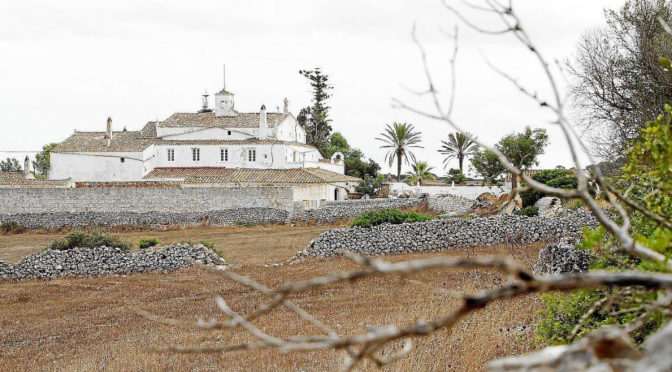Views: 1337
We have recently seen in the Menorcan press repeated messages by investors that have started agro tourism of Santa Ponça and Torre Vella. Some messages implied that this island is an embarrassment because procedures are very long, because tourism is not well received and that some farm improvements demand too much bureaucracy.
As has been stated publicly to these people, since no one has given details nor the origin of the disagreements, GOB considers it important to make public some features of the project that have been applied by the above mentioned farms, so that people can have more points of reference. Our organization analysed the project of Santa Ponça, when it came in front of public scrutiny, and made court depositions.
Let us put it all in context. For some years, numerous important people have been coming to the island with purchasing power and they buy farming operations wanting to bring them up to date.
This is a double opportunity for Menorca. On one side, they are starting up farming activities with a new focus, looking for different markets and, in many cases, they consider methods of biological agriculture. On another side, they invest in the recuperation of the rural architectural heritage that has fallen into disuse in the last decades.
But, as often happens, not everything in particular cases is good nor is everything all bad. In GOB’s opinion the nationality of the investors is not important, nor their economic capability. What is important is what they do with their investments and what consequences there are for the island.
In Santa Ponça a vineyard is being planted, as well as aromatic plants and other products which could be interesting. Where the conflict is, however, is from the building constructions. Let us look at the details.
In this place is a large country house, with a ground floor, first floor and attic of 2,850 cubic meters. The proposed project is to enlarge it by 478 cubic metres. Very near to the house, to the west, there is cattle shed with a store attached, of 662 cubic metres, which they would like to increase by 571 cubic metres. In addition, there is another cattle shed of 645 cubic metres to which they wish to add 665 cubic metres (more than double the size).
Let us continue. To the north of the house, there are some agricultural stores of 779 cubic metres which they want to increase by another 340 cubic metres. To the south of the house, are some water tanks, with a dovecot and cattle shed, of 989 cubic metres that they want to increase by another 491 cubic metres. And a little further to the south there is another farm building of 334 cubic metres which they want to renovate without enlarging it.
To summarize: In Santa Ponça are buildings which are 6,266 cubic metres and to which they wish to add 2,545 cubic metres. A total of 8,811 cubic metres of architectural heritage which the promoters aim to use totally for touristic purposes.
We have said that GOB has made court depositions. In those we sought something apparently logical that not every building should be for touristic use. An agro tourism should have agricultural activity and, therefore, it seems obvious that some areas and buildings are employed to this end.
We do not know if there is some difference in language causing incomprehension to the reader, or if the promotors act mediated by advisors or institutions who have some other agenda. But, the Messrs Biousse and Foucher say that they find that GOB considers tourism shameful or an embarrassment. As always, the game is to try to infantilise the debate in order not to talk about important issues.
No Sirs, tourism is not at all shameful. What is a shame is that with a project of 8,800 cubic metres they now try, furthermore, to construct a new building for agricultural use alleging, “they do not even have anywhere to put a tractor”.
Let us play this game. As the regulations do not allow adding new buildings for tourist use, we take all the existing farm buildings and extend them, making them for touristic purposes, and then we ask for new constructions for agricultural use, taking advantage that the regulations here do not put on restrictions if the needs are justified.
We will not discuss whether the local government is slow. But, yes, let us discuss whether or not their petition for new buildings is justified. Yes, let us discuss whether or not the promoters are making an adequate interpretation of the regulations. Yes, let us discuss whether or not they are sympathetic to the idea of agro tourism that helps farming activity and not to speculative building operations.
Luckily, not all cases are like this. There are people who are really recuperating farming activities without incorporating all these building negotiations. The case we are dealing with today only makes it an urgent necessity for better regulations and to have control of the demolition aims. It is not possible to praise the conservation Menorca is known to have, but we must continue in this manner.
Discussions on the future of Menorca require people with vision working together and not just for particular negotiations. They need to be people with the capability of discussion and, also, perhaps, with a little modesty.


One thought on “Santa Ponça and the indignant promoters”
Comments are closed.